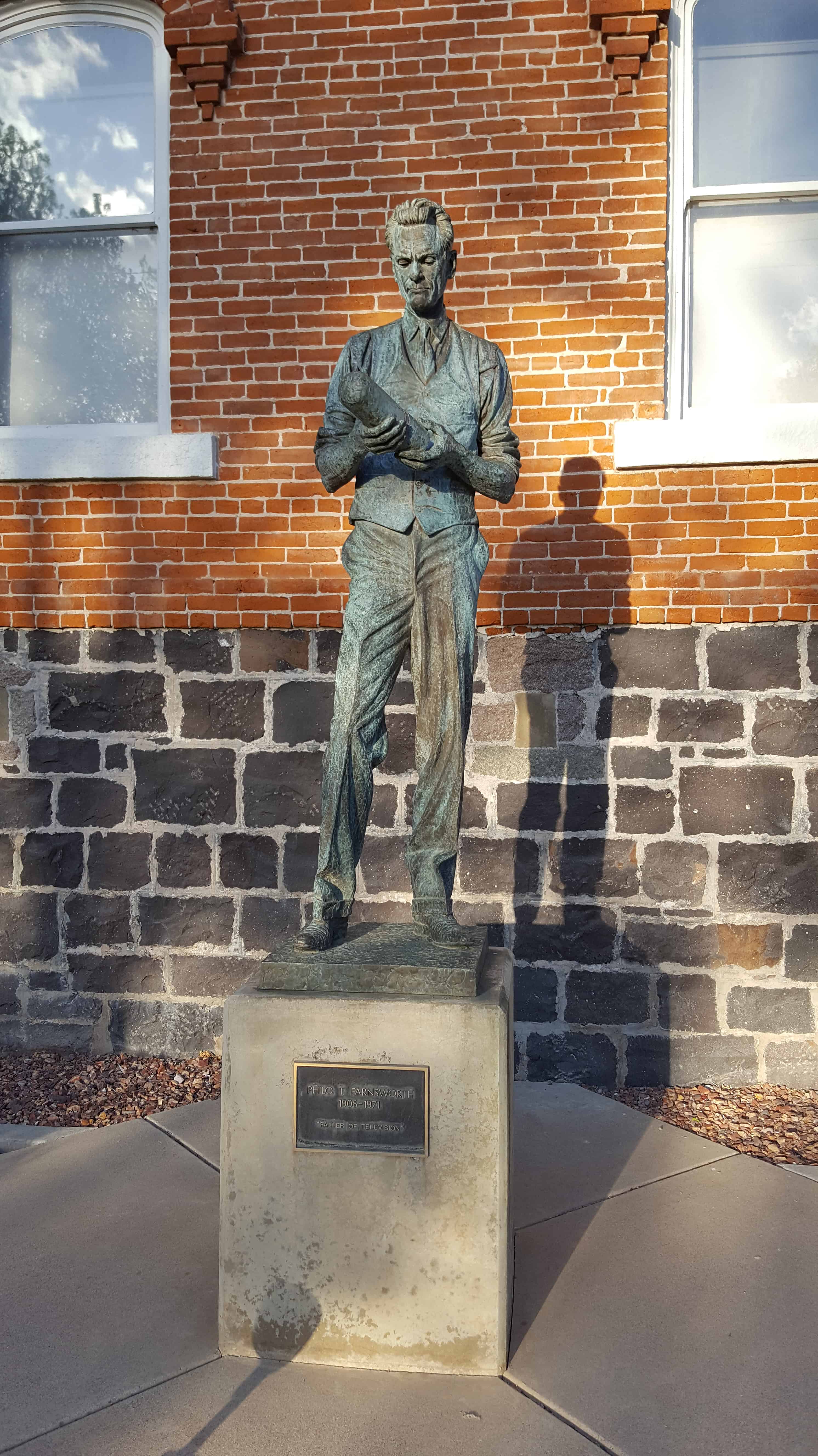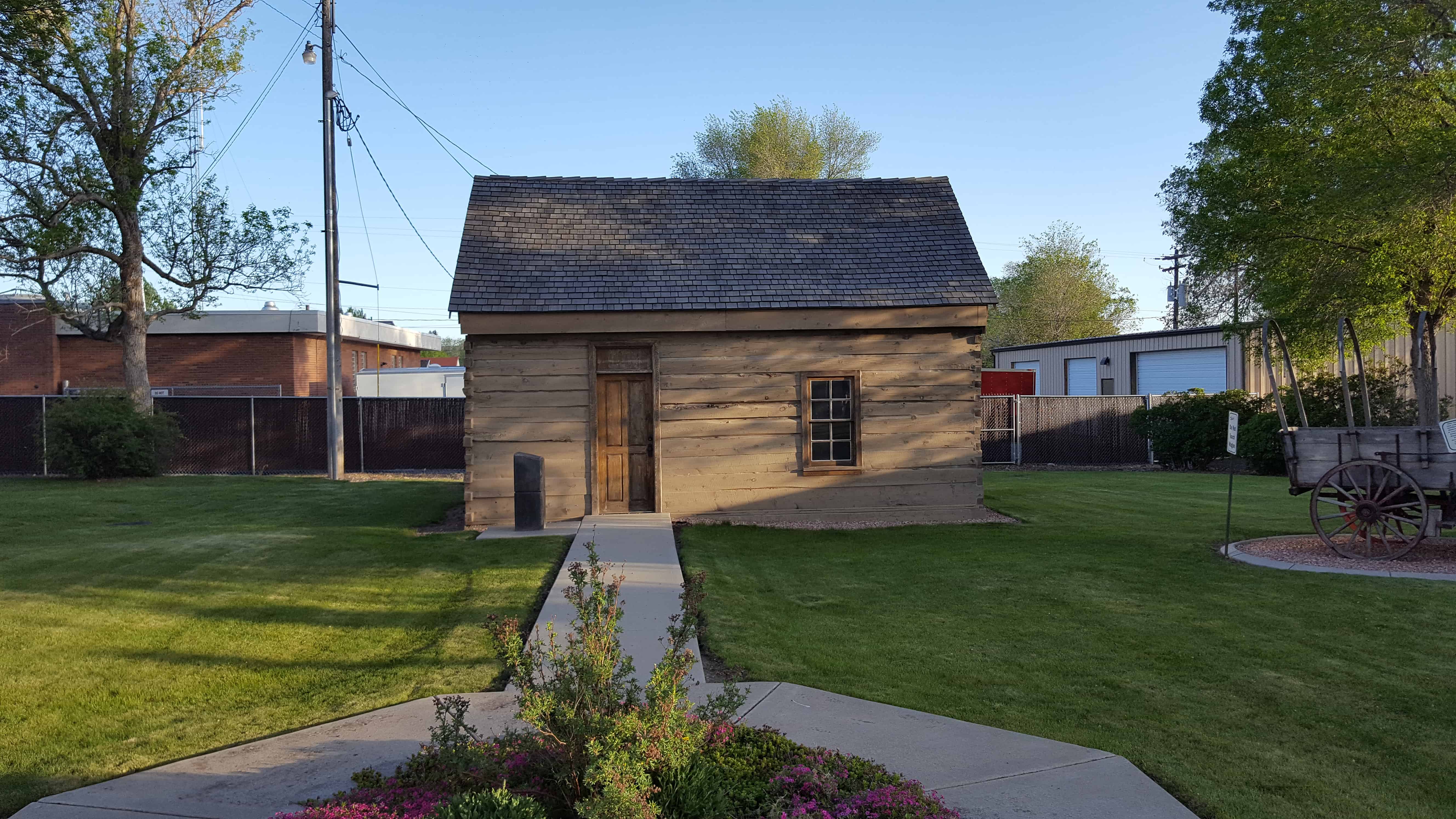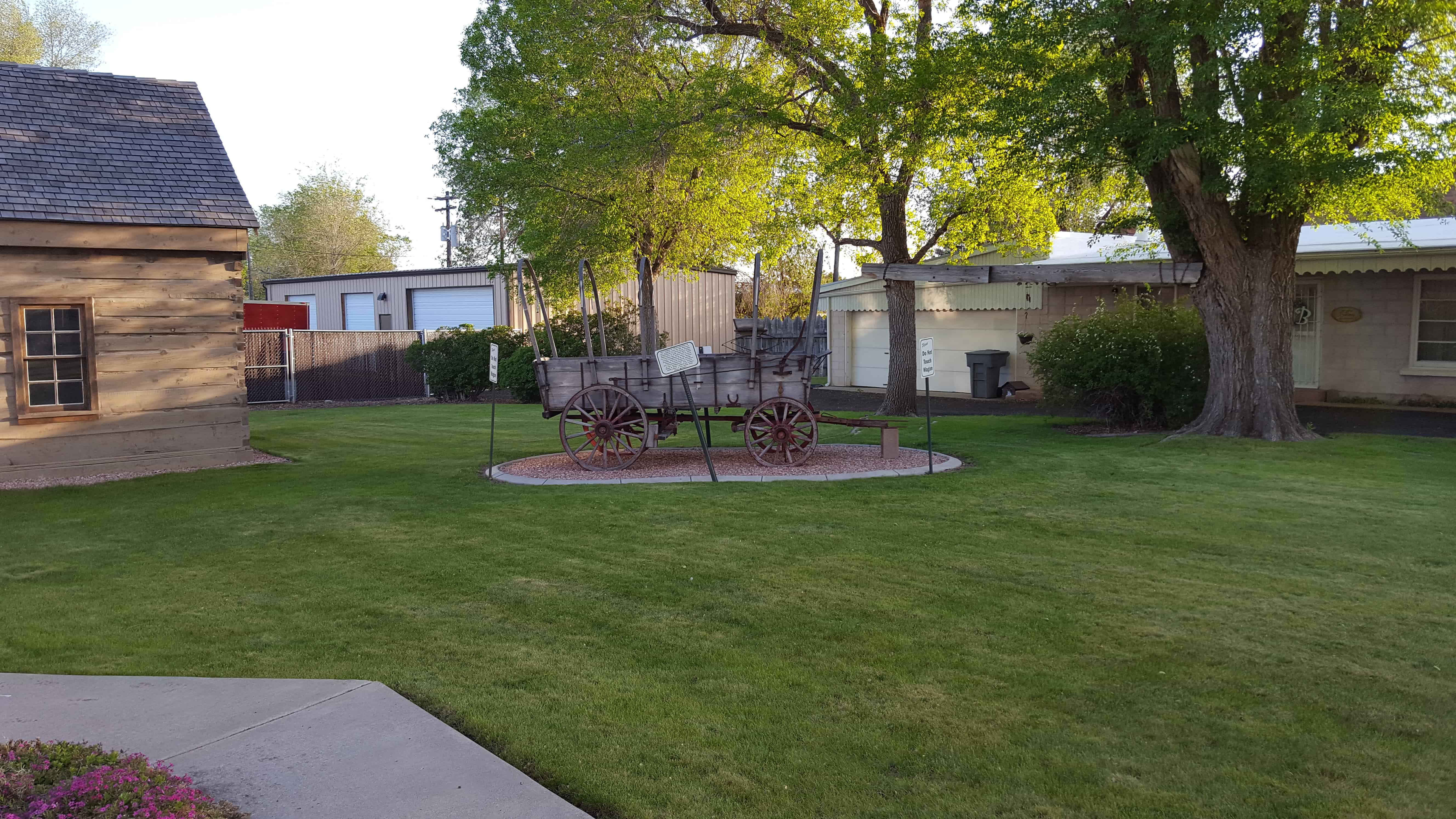
Philo T. Farnsworth
1906-1971
“Father of Television”
Philo Taylor Farnsworth was born August 19, 1906 in a log cabin near Beaver, Utah. At an early age, he became familiar with the various components of the telephone and the gramaphone. By age 12, he had a thorough understanding of electronics. In 1922, at age 15, now living in Rigby, Idaho, he developed the concept of the electronic transmission of images, and drew mathematical diagrams to show how this could be done.
In 1927, in San Francisco, California, after having invented and developed numerous vacuum tubes, such as the image dissector which the statue is holding, he was able to transmit and receive a recognizable image.
In 1934, after demonstrating that his ideas of electronic image transmission were the first to be written down, he was issued patents regarding television methods that are still used in every television receiving set, television camera, and transmitter manufactured in the United States as well as abroad.
He was issued over 170 patents regarding electronic inventions, most of which were designed for television. In addition, he also developed the first electron microscope, baby incubator, and medical gastroscope. He pioneered electronic infrared surveillance scopes used in World War Two and ever since. He developed memory vacuum tubes for radar screens, air traffic control, and underwater sonar devices. At the time of his death, he had developed cold cathode-ray tubes that are used in the television and computer industries, and working in cold nuclear fusion.

This early sawed log farm cabin (circa 1890-1900) was relocated to this site from the small hamlet of Manderfield located 5 miles north of Beaver.
Manderfield was known as Indian Creek in pioneer days. The Beaver Chapter of the sons of The Utah Pioneers took on the project when the owners of the building, LaVar and LaRay Cox donated it to the community. It is believed by many to be the birth cabin of Philo T. Farnsworth, the inventor of modern television.
His uncle, Robert Farnsworth, is thought to have built the cabin. Philo’s father and two of his mother’s brothers purchased 800 acres just north of his uncle Robert’s homestead the summer of 1906. Consequently, it is thought that Philo’s family was living with his uncle at the time of his birth, August 19, 1906.
For the first three years of his life Philo’s family lived and farmed in the Manderfield area. The family left Beaver County and lived for a time in the town of Washington, near St. George, then near Vernal in northeastern Utah. They eventually moved to a farm near Rigby, Idaho. As a lad of 15, Philo was attending school in Rigby, when the idea of how to electronically scan and transmit a visual image occured to him. It is said that he was riding on a horse drawn plow which created parallel rows in the farm field in preparation for spring planting when the inspiration of how to dissect a visual image into parallel horizontal lines; electronically scan it and reassemble the original image on a Television screen took root. Fortunately he diagrammed his idea on a small piece of paper which he gave to his teacher at Rigby High School. He was 21 years old when he was finally able to transmit an image of his wife, Elma.
The teacher kept the piece of paper, and years later was able to produce it as evidence when Philo’s patent was being challenged in the courts by the RCA Corporation, headed by David Sarnoff. The courts ruled in favor of Philo and settled the matter. Philo T. Farnsworth went on to invent numerous other devices. He died March 11, 1971.

This wagon is a reproduction of the wagons used by the Mormon Settlement to travel from Omaha, Nebraska to Salt Lake City, Utah. It traveled the entire trail in 1997 being navigated by Vern and Carol Condie sponsored by the Beaver County Travel Council during the sesquicentennial re-creation of the settlement. Two mules “Ruth & Ruby” pulled the wagon 1000 miles, a trip which took three months.





Pingback: Beaver, Utah | JacobBarlow.com
Pingback: Manderfield, Utah | JacobBarlow.com
The plaque that talks about his life with birth dates, etc.. where is this? Is this on the side of the statue? I missed that when I visited the marker recently.
Yes, that’s where it is. I know it’s easy to miss things sometimes I kick myself when I get home.